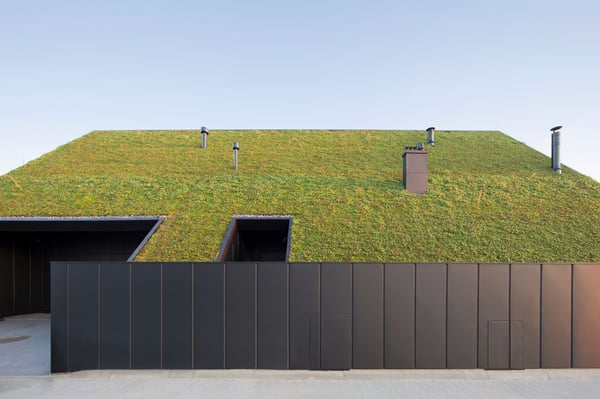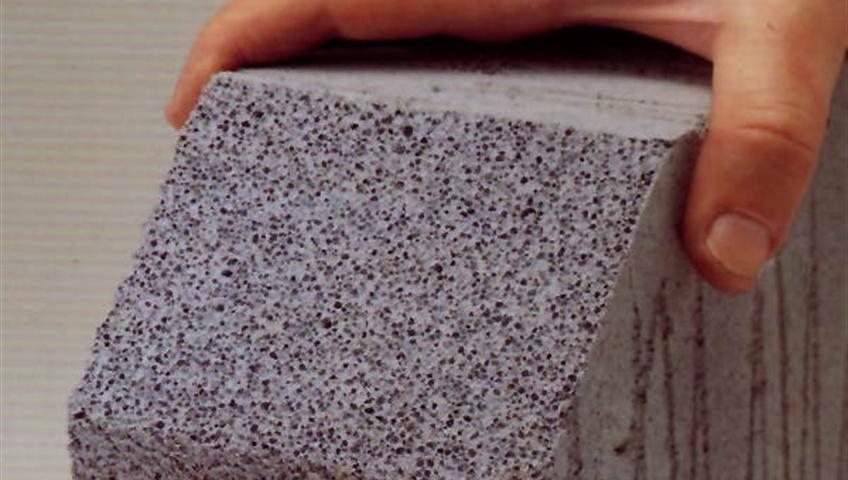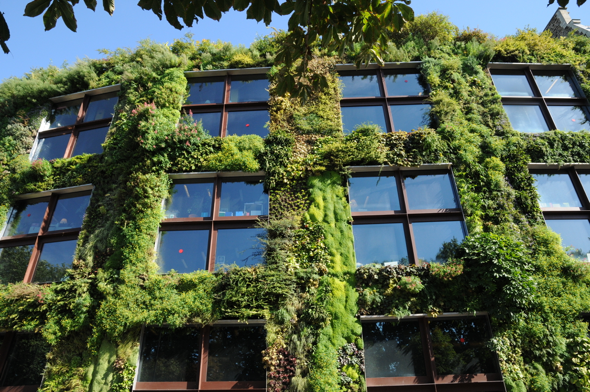Ever growing in popularity, green roofs and green infrastructure are becoming more and more common in architectural practice, used for both their aesthetic value, reclaiming a traditionally underutilised space, as well as for their innate thermal performance qualities improving the thermal comfort of a building whilst also promoting biodiversity.
Green roofs provide direct shading for the roof drastically reducing exposure of the roof structure to the elements (sun, rain etc.), this both increases the lifespan of the roof, whilst also increasing the thermal performance of the building. The R value of the roof is dependent on the thickness of the soil, as soil is not very thermally massive it does not absorb much heat and therefore reduces the absorption of heat through the roof providing insulation. The soil depth is dependent on the type of green roof, those being either extensive, intensive or semi-extensive.
Green roofs can cool local climates between 3.6-11.3 °c, therefore if photovoltaics are located above the garden their efficiency can be improved by up to 25% due to the cooler conditions. This cooling effect also reduces the overall “urban heat island effect” (heating effect caused by the density of hard thermally massive materials within the city), therefore creating a generally lower climate temperature whilst also improving the air quality within the city. Green Screens and walls are also very effective additions to improve the air quality around the home with some screens being able to trap up to 95% of airborne heavy metals generally improving air quality whilst also reducing CO2 in the city.

Green roofs can be installed on existing roofs however this does place a lot of stress on the roof structure with some structures not able to cope with the introduced live load, especially with the increased weight of water in the soil. However, the green roof does reduce the overall storm water run off slowing its movement and reducing its impact on the stormwater system. This moisture on the roof can also be highly advantageous in high fire risk areas.
Depending on the plants that are used on the roof, it can also increase the biodiversity of the area reintroducing habitat that was lost by the construction of the building. The roof can also be used to grow fruit and vegetables reducing the occupant’s reliance on commercial sources whilst also reducing the need to have food transported into the city reducing carbon emissions.
With their increasing popularity, legislation is slowly being developed for them to become more appealing for designers to use, with the BESS process already providing thermal performance incentives for their use. However green roofs still are not recognised in the BASIXor NatHERS process, promoting the need for further recognition of new materials which is missing in BASIX.
To read more about BASIX, click here







